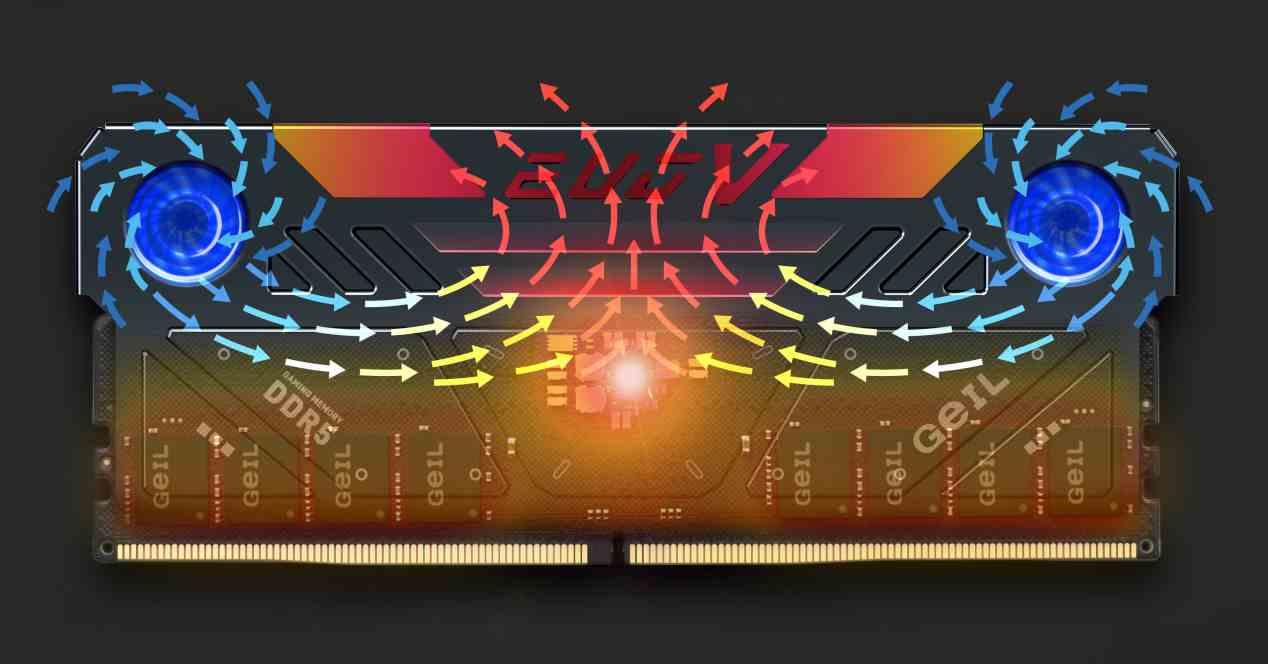It’s not very normal to see active cooling in RAM because they usually use the passive type. That is, a copper heat sink and some other material. However, the fact that the PMIC, in charge of power management, is inside the DIMM module itself has made possible the curious DIMM module we are going to talk about. We mean GeIL EVO V DDR5 RGB which is distinguished by the use of a double fan. How is it possible?
From time to time, component manufacturers surprise us with ideas that are curious to say the least. In the case of the Taiwanese manufacturer GeIL and its EVO V DDR5 RGB,
GeIL EVO V DDR5 RGB, specifications
We are facing a DDR5 RAM memory module that comes in two different capacities: 16 and 32 GB. Which will be sold as a double kit in two different colorways, as can be seen in the image gallery below these lines.


As for its technical specifications, they are as follows:
- Su CAS latency stands between 34 and 40depending on the clock speed reached during the overclock, the latency will gradually increase between these two values.
- works at 4800MHz than the standard transfer speed, but can reach the 6600MHz. However, it can reach other intermediate speeds such as: 5200MHz, 5600MHz, 6000MHz, 6200MHz, 6400MHz there 6200MHz.
- support Intel XMP 3.0 Profiles.
- Its voltage fluctuates between 1.1 V and 1.25 V depending on its clock speed.
Well, as we mentioned in the introduction, DDR5 modules GeIL EVO V DDR5 RGB use micro fansyes These are located by under aluminum radiator there They manage to reduce the temperature by 45%. They achieved this thanks to the fact that the integrated circuit responsible for managing the energy is located inside the module. This allowed them to integrate an active cooling system into it without the external participation of other components.
Currently, RAM memories do not reach the power consumption levels that require the use of fan cooling systems. Apart from its almost unknown manufacturer, it remains to be seen if the major brands that produce RAM adopt this solution. For the moment, at the speeds currently achieved by DDR5, this does not seem necessary. When might change generally occur? Honestly, we don’t know.








